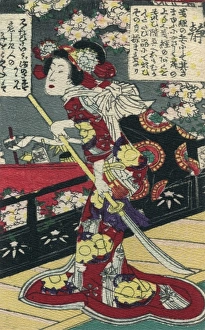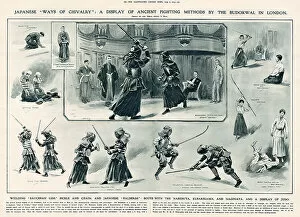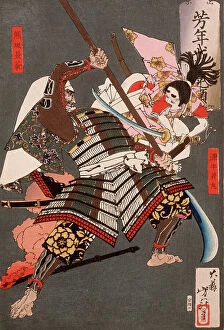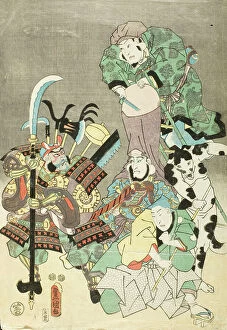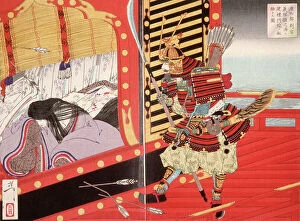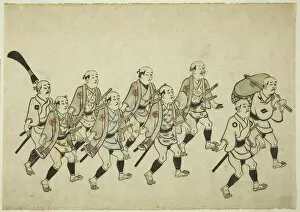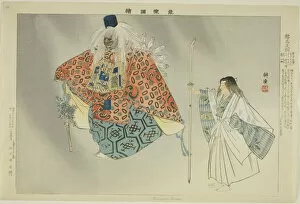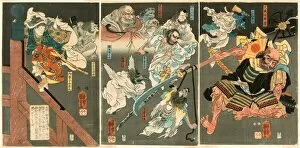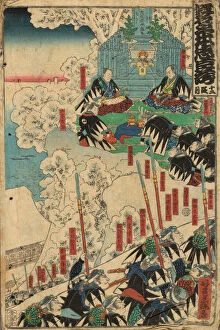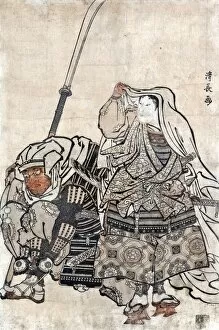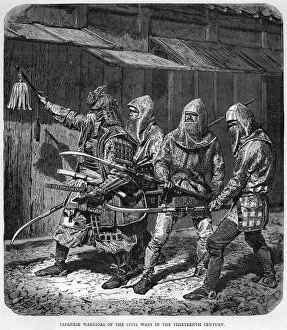Naginata Collection
"Naginata: The Weapon of the Japanese Warrior Woman" In ancient Japan, chivalry was not limited to men alone
For sale as Licensed Images
Choose your image, Select your licence and Download the media
"Naginata: The Weapon of the Japanese Warrior Woman" In ancient Japan, chivalry was not limited to men alone. The Japanese warrior woman, armed with her naginata, displayed a remarkable blend of grace and strength. At the Aeolian Hall in London, the Budokwai showcased these ancient fighting methods, wielding "saucepan lids, " sickle and chain, and Japanese halberds like the Nabebuta, Kusarigama, and Naginata. The artistry surrounding this weapon is evident in Hishikawa Moronobu's masterpiece "Procession of a Daimyo. " This captivating painting transports us back to a time when warriors proudly carried their naginatas as symbols of honor and power. Kogyo Tsukioka's series "Pictures of No Performances (Nogaku Zue)" further immortalizes the legacy of the naginata. Masataka stands tall with her weapon by her side while Hashi Benkei exudes an aura of invincibility. Kurama Tengu strikes fear into hearts with his menacing presence while Ikari-Kazuki showcases precision and skill. Throughout history, heroes have emerged wielding this formidable weapon. Torii Kiyoshige captures Minamoto no Yoritomo hiding in a tree during battle - a testament to his resourcefulness. Ando Hiroshige's depiction of Yoshioka Kenbo from "Five Heroic Men" portrays him as an embodiment of courage. One cannot forget Utagawa Kuniyoshi's iconic scene where Young Yoshitsune defeats Benkei at Gojo Bridge - an epic clash that forever etched itself into folklore. Even today, we are fascinated by these tales from Kanadehon's "The Storehouse of Loyal Retainers" or witnessing Japanese warriors battling it out during civil wars in the thirteenth century through historical depictions captured in c1875.

